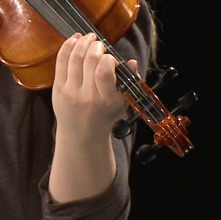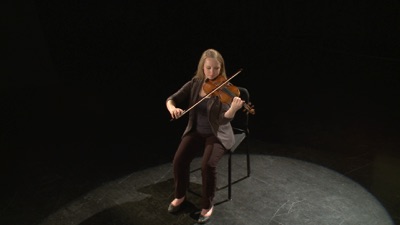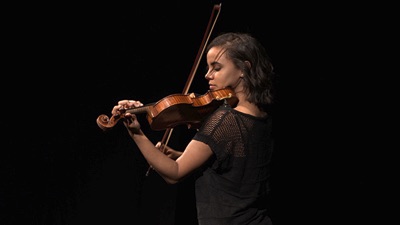


ACKNOWLEDGEMENTS


I worked on the material that eventually became The Art of String Teaching for 23 years, so there are a lot of people I would like to acknowledge who have helped me at various stages in this endeavor. First, I would like to thank Robert Culver, my mentor and inspiration for writing this book. Professor Culver taught at the University of Michigan for over 35 years and inspired an entire generation of string educators. His support and belief in my potential helped me to sustain this fledgling project through the early years. It was through Professor Culver that I met so many of my ASTA colleagues who have provided me with tremendous support and inspiration over the years. I am deeply honored (and at times overwhelmed) to have been hired as Prof. Culver’s replacement when he retired in 2010. Prof. Culver introduced me to many amazing teachers who have influenced my thinking in string education. I would like to especially thank Steve Benham, Andy Dabcyzinski, Gerald Fischbach, Bob Gillespie, Mark Mutter, Kristen Pellegrino, Bob Phillips, Val Palmieri and Randy Sabien for broadening my knowledge in all areas of string education.
My principal bowed stringed instrument is the double bass. Ed Krolick was my first double bass teacher and provided me with many great opportunities. I studied double bass in graduate school with Stuart Sankey, who was perhaps the greatest musician I have ever known. I am deeply thankful for the many inspirational hours I was able to spend with him. I would also like to thank Alec Mariani and Anthony Stoops for all of the great ideas on double bass pedagogy they shared with me during graduate school (and beyond), and my colleague Diana Gannett for sharing her amazing materials and incredible knowledge of the bass with me and the participants at the Michigan String Workshops. Thanks to John Kennedy, Larry Hutchinson, and all the other dedicated bass teachers who have helped with Bass Bash over the years. Finally, I would like to thank Steve and Aaron Reiley for their skilled luthierie, and helping me better understand my instrument!
The early development of the website was influenced by my summer teaching experiences with Steve McNeal, Cameron Law, Lori Buonamici, Sandra Lascarro. Abby Alwin, James Gross, Chris Hill, Anne Ogren, Carol and Mark Palms. During the 90s James Froseth, Barton Polot, and Bret Smith helped me learn to think like a researcher, engage in systematic inquiry, and be innovative with technology. In the 2000s the project was influenced by my Vermont friends and colleagues Roy Feldman, John Dunlop, Pam Reit, Ira Morris, Evelyn Read, and all the members of the BCO. Thank you all for the many great conversations about string education during those years.
I am fortunate to live in a state with a strong commitment to string education and to be a member of the American String Teachers Association (ASTA). Every time I have attended the Michigan Music Conference or the national ASTA conference I attend inspirational and informative sessions that further influence my knowledge of string education. The presenters I have listened to over the years are too numerous to mention, however, I would like to thank all the string educators who are active in our professional organizations and take the time and energy to share their insights with attendees at our professional meetings. They are the leaders who ensure a bright future for string education.
I would like to thank the University of Michigan Faculty Block Grant program for support with the video production. Thanks to Robert Newcomb, Jacques Mersereau and all the other members of the DMC Studio Team who helped with the production. Special thanks to Caitlin Adamson, Anita Dumar, Tommy Hawthorne, Julia Knowles, Allie Lahnala, Lauren Rodewald, Gwendolyn Matias-Ryan, Lucas Song, and Loi Vo for providing the outstanding video demonstrations that complement this publication.
I would like to thank my students Molly Baugh, Lydia de Leeuw, Madeline Warner, and Jane Ye for reading early drafts of the manuscript and providing me with valuable feedback. Special thanks to my friend and colleague Andrea Yun, who helped with the cello fingerings, proofed many, many chapters and provided brilliant insights in all areas of the presentation.
Finally, this project could never have been completed without the support of my family. My children Hannah and Grace are a daily inspiration and have given me many insights into teaching the violin and cello! My wife Carolyn Lukancic has given me tremendous assistance and support with this project for many years. She was extremely supportive and helpful as I wrote this book, and helped me in all areas of violin and viola pedagogy. Her encouragement helped get me through the final stages and finish this project.





